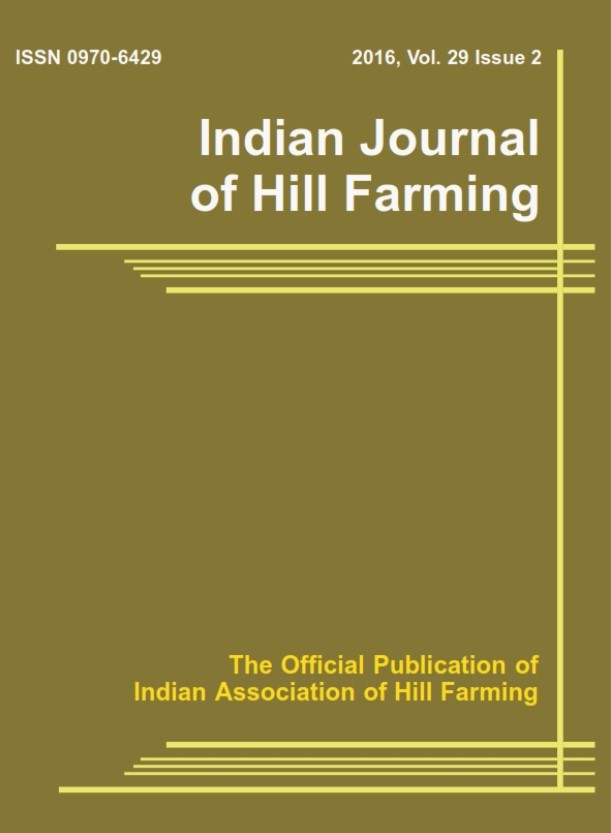Phenology of Vegetative Growth of Selected Mango Varieties in West Garo Hills of Meghalaya
DOI:
https://doi.org/10.56678/iahf-2024.37.02.11Keywords:
Phenology, , Vegetative flush,, Bud development, , Leaf development, , Shoot development, mango.Abstract
Phenological stages of vegetative growth of mango varieties viz., Dashehari, Kesar and Amrapali were observed using the extended BBCH scale for mango proposed by Hernandez Delgado et al. (2010). The dates of occurrence of the principal stages of bud development (stage 1), leaf development (stage 2) and shoot development (stage 3), and the time required for transition from one phenophase to the next were recorded. Vegetative growth was observed in four flushes of bud (011–019, 021–029, 031–039 and 041–049), leaf (110–119, 120–129, 130–139 and 140–149) and shoot (311-319, 321-329, 331-339 and 341-349) development in the three varieties. Variety Amrapali completed bud development (011-019) in 16-35 days while Dashehari required 23-37 days and Kesar required 20 to 36 days for completion of bud development. Leaf development (110-119) was completed in 9 to 19 days in Amrapali, 12 to 24 days in Dashehari and 8-23 days in Kesar. Shoot development (311-319) in Amrapali required 15 to 51 days, 20 to 39 days in Dashehari and 20 to 46 days in Kesar. The time required for the transition from the beginning of leaf bud swelling (011) to end of leaf bud swelling (013) was the maximum (12–25 days in Amrapali, 17–25 days in Dashehari and16–25 days in Kesar) compared to a transition period of other phenophases. The total time required for completion of vegetative flush, starting from leaf bud swelling (011) to completion of shoot development (319) was 40 to 105 days in variety Amrapali, 55 to 100 days in Dashehari and 48 to 105 days in Kesar. The data on time required for the transition of one phenophase to the next can help in advance planning and effective implementation of various plant protection measures, growth regulator treatments and manure or fertilizer treatments for a variety in a particular agro-climatic condition, which are crucial for its vegetative growth and vigour which ultimately influences the flowering and fruiting of a variety.
Downloads
Published
Issue
Section
License
Copyright (c) 2025 Abhishisha Mawkhiew, Lolly S. Pereira (Author)

This work is licensed under a Creative Commons Attribution-NonCommercial-NoDerivatives 4.0 International License.




